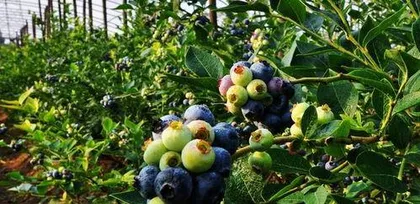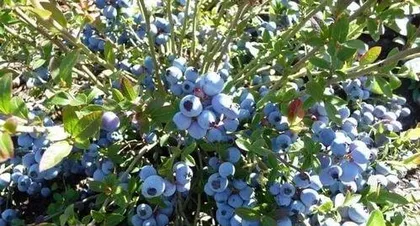Have you ever thought that you could grow delicious blueberries in your own backyard? Imagine when summer arrives, you pick fresh, juicy blueberries from your own orchard. The feeling is simply amazing! Today, let me guide you step-by-step through the art of growing and caring for blueberries, and make your blueberry orchard a reality!
I. Preparing for Blueberry Planting
1. Choose the right variety: There are many varieties of blueberries, such as northern highbush, southern highbush, and rabbiteye. Choose the right variety based on your growing environment and taste preferences. For example, northern highbush blueberries are cold-hardy and suitable for northern regions.
2. Soil selection: Blueberries prefer acidic soil with a pH between 4.5 and 5.5. If the soil is too alkaline, you can adjust it by adding acidic fertilizers or organic matter.
3. Planting time: Spring is the best time to plant blueberries. The moderate temperature is conducive to root growth and germination.
II. Blueberry Planting Steps
1. Digging the hole: Dig a hole 50 cm deep and wide, depending on the size of the blueberry seedling.
2. Fertilizing: Apply a suitable amount of organic fertilizer, such as chicken manure or cow manure, to the bottom of the hole to provide sufficient nutrients.
3. Planting: Place the blueberry seedling in the hole, spread out the roots, then backfill with soil and gently compact it.
4. Watering: Water thoroughly immediately after planting to help the seedling establish its roots. III. Key Points for Blueberry Care
III. Key Points for Blueberry Care1. Watering: Blueberries prefer a moist environment but should not be waterlogged. Keep the soil moist during the growing season and water promptly during droughts.
2. Fertilizing: Apply organic fertilizer once in the spring and once in the fall each year to replenish the nutrients needed for blueberry growth.
3. Pruning: During the growth process, promptly prune diseased, weak, and overly dense branches to maintain a beautiful shape and improve fruit quality.
4. Pest and disease control: Blueberries are susceptible to pests and diseases such as aphids and spider mites. When pests or diseases are found, take timely measures such as spraying pesticides or pruning diseased branches.
IV. Blueberry Harvesting and Storage1. Harvesting time: When blueberries are ripe, the fruit will be dark blue and soft to the touch. This is the best time to harvest.
2. Harvesting method: Use scissors or your hands to gently cut or pick the fruit, avoiding damage to the plant.
3. Storage: Freshly picked blueberries can be refrigerated and will stay fresh for about a week.
By following the steps above, I believe you have mastered the skills of growing and caring for blueberries. Give it a try, add more green and deliciousness to your home! Remember, growing blueberries is not just a pleasure, but also a love for life. Let's use our hands to create a beautiful home together!